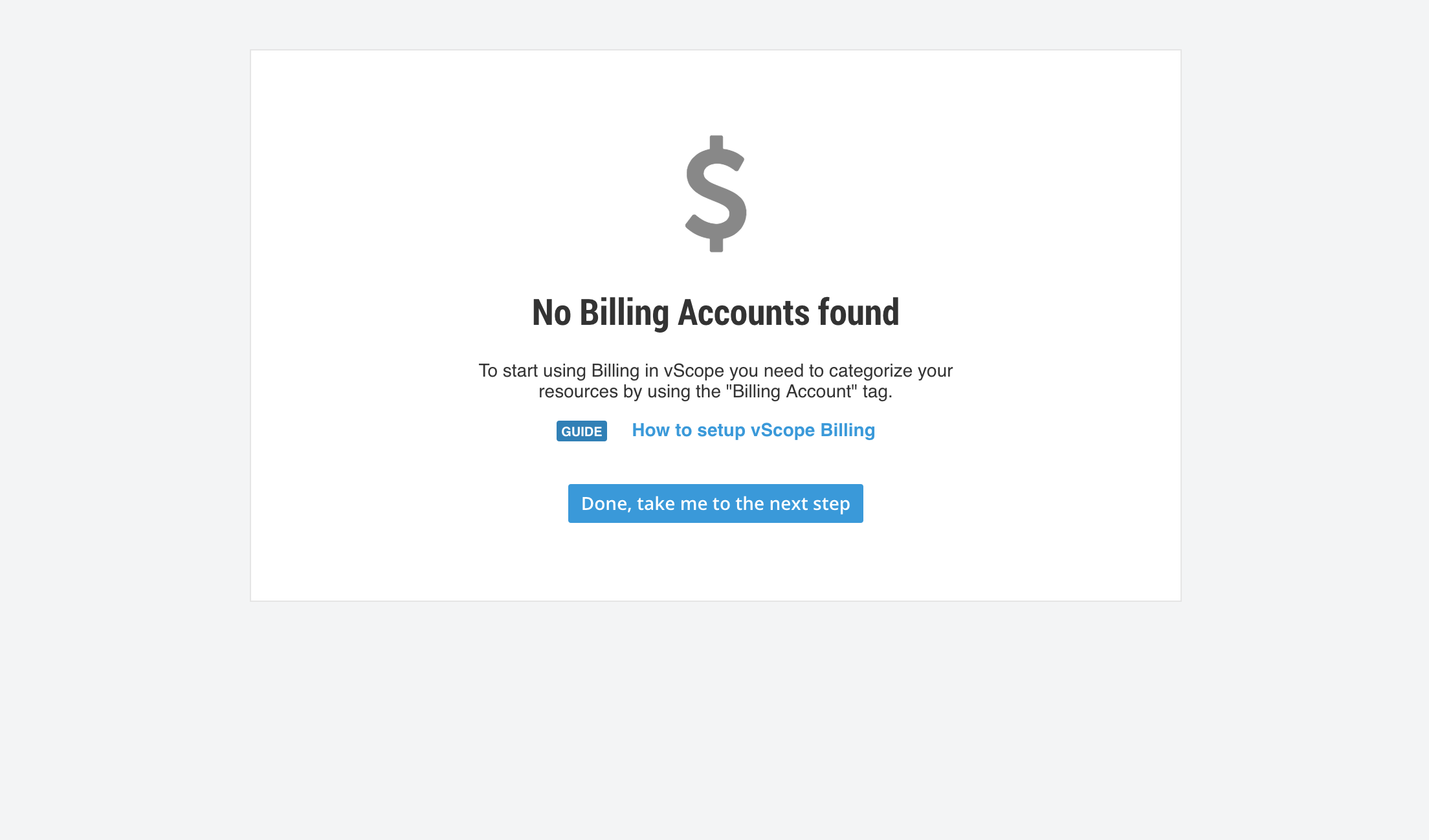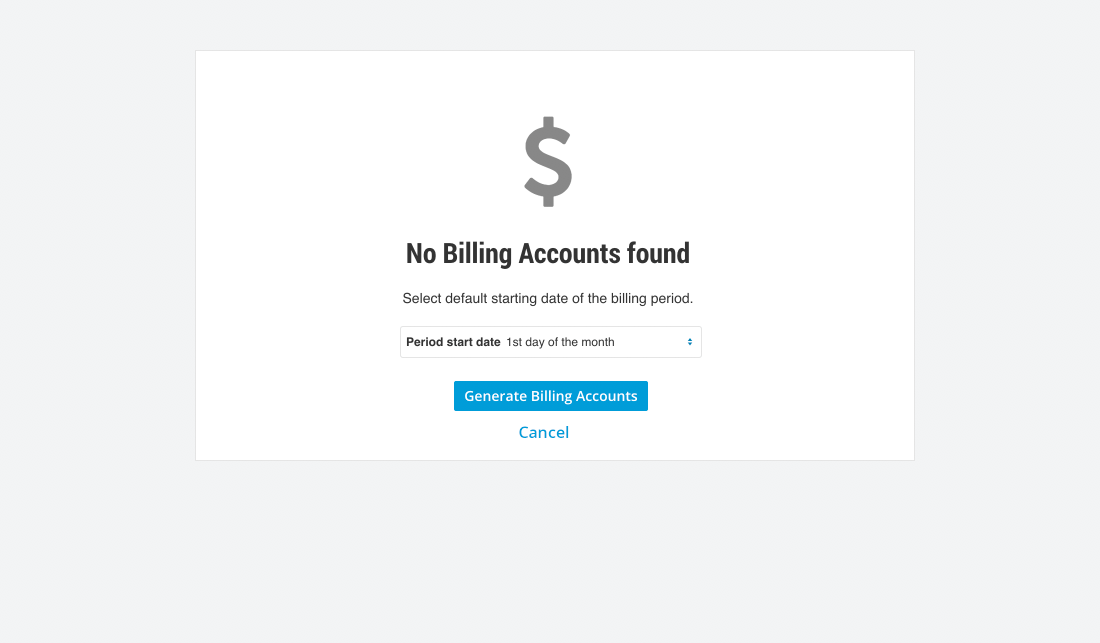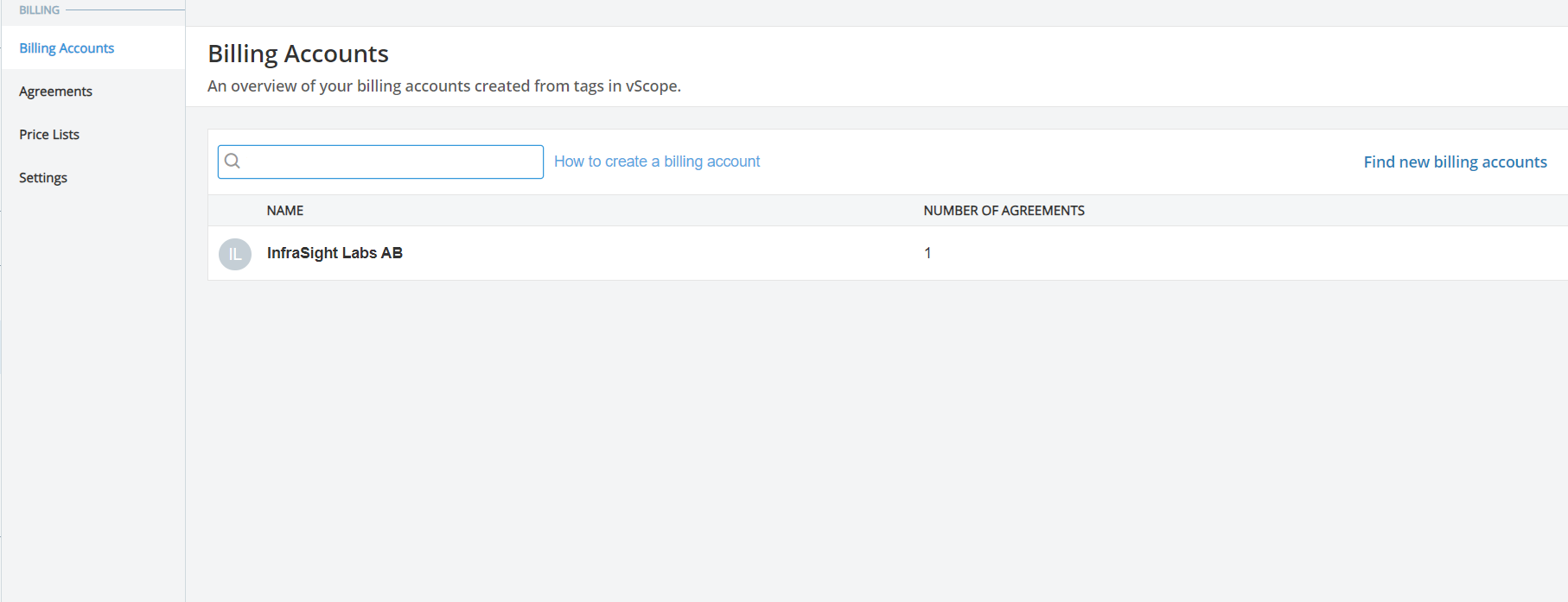Notice: Administrator privileges in vScope are required to use Billing
vScope Billing allows organizations to add prices to their IT resources for more accurate and efficient billing process. Setting up Billing in vScope is a quite straight forward process that, if done right, will only take you a few minutes.
This guide goes through the basics of how to setup vScope Billing in the easiest way possible.
How it works and how to get started
1. Inventory – Discovery Manager
vScope continuously inventories all IT resources including VMs, servers, databases, network devices, user accounts etc. If you haven’t set up vScope’s inventory yet, please read more on the following link:
How to setup Discovery Manager
If you already have a working Discovery you may continue.
2. Categorization – Billing account tag
In order to assign resources to your Billing Accounts you will need to categorize them with the Billing Account tag. This is done with help of tagging, most preferably with rule-based tagging.
To start tagging your resources:
1. Go into Table Explorer

2. Create a new Table of any resource (eg. Server, User Group) that you would like to assign to a Billing Account.

From here you have two options:
Option A – Rule Based tags (Recommended)
The benefit of using Rule based tags is that Billing Accounts is continuously updated depending on the rules you define.
1. Select the resource you want to tag
2. Hit the yellow + Create tag button to start creating a tag
3. Enter “Billing Account” as NAME…
4. with fixed value…
5. Enter [Customer Name] as Fixed value

6. Now open up the filter panel and define: How do we know what customer these resources belong to? In this case, all servers in the folder Infrasight Labs belongs to Infrasight Labs. However, you may use IP ranges, VM name, Location or anything else and you may combine any number of filters.

7. Confirm the preview that it looks correct and hit Save.

8. Hit ‘Add’ and repeat for any other Billing Account and/or resources.
Option B – Manual tagging
You may also assign resources to Billing Accounts by using manual tagging.
1. Select the resources you want to tag
2. Right-click and select “Add tag”

3. Enter “Billing Account” as tag name and add the customer name to the “Value field”.

3. Hit ‘Add’ and repeat for any other Billing Account and/or resources.
3. Generating Billing accounts
You have successfully assigned resources to Billing Accounts. vScope will now be able to automatically categorize all resources and generate billing details for you. To generate all Billing accounts created:
1. Go into the Billing tab in vScope
2. If done correctly you can click through to the next step

3. Select the default starting date for the billing period. This is used to eg. estimate monthly spend. You can change this later on.

4. Click Generate Billing Accounts. If done right you will end up on an overview page of your Billing Accounts.

Any prices shown are from the default Price List. Next step is to customize Price Lists to match your pricing rules.
4. Pricing – Price Lists
The last step is to translate your prices into vScope Billing. This is done by creating Price Lists within vScope Billing. If you want to deep dive in this, please read the following post about Price Items, Groups and Categories. Here is how it’s done:
1. Click “Create Price Lists”

2. You can either use the Default Price List as a starting point, a template to create your own pricing rules or start from scratch by creating a New Price List
4b. Price List versions – schedule price changes
About
Eventually you might need to change prices in the Price List due to inflation, currency markup, seasonal sales, discounts or anything else affecting the prices. However, you don’t want to create a completely new Price list whenever this happens or make changes that affects the history of the Billing account.
This is why vScope Billing comes with support for “Price List versions”. Adding a version of a Price List allows you to decide what prices that shall be active during what period. This goes for both future price changes and prices that you might have changed in the past.
Learn more about Price List versions
